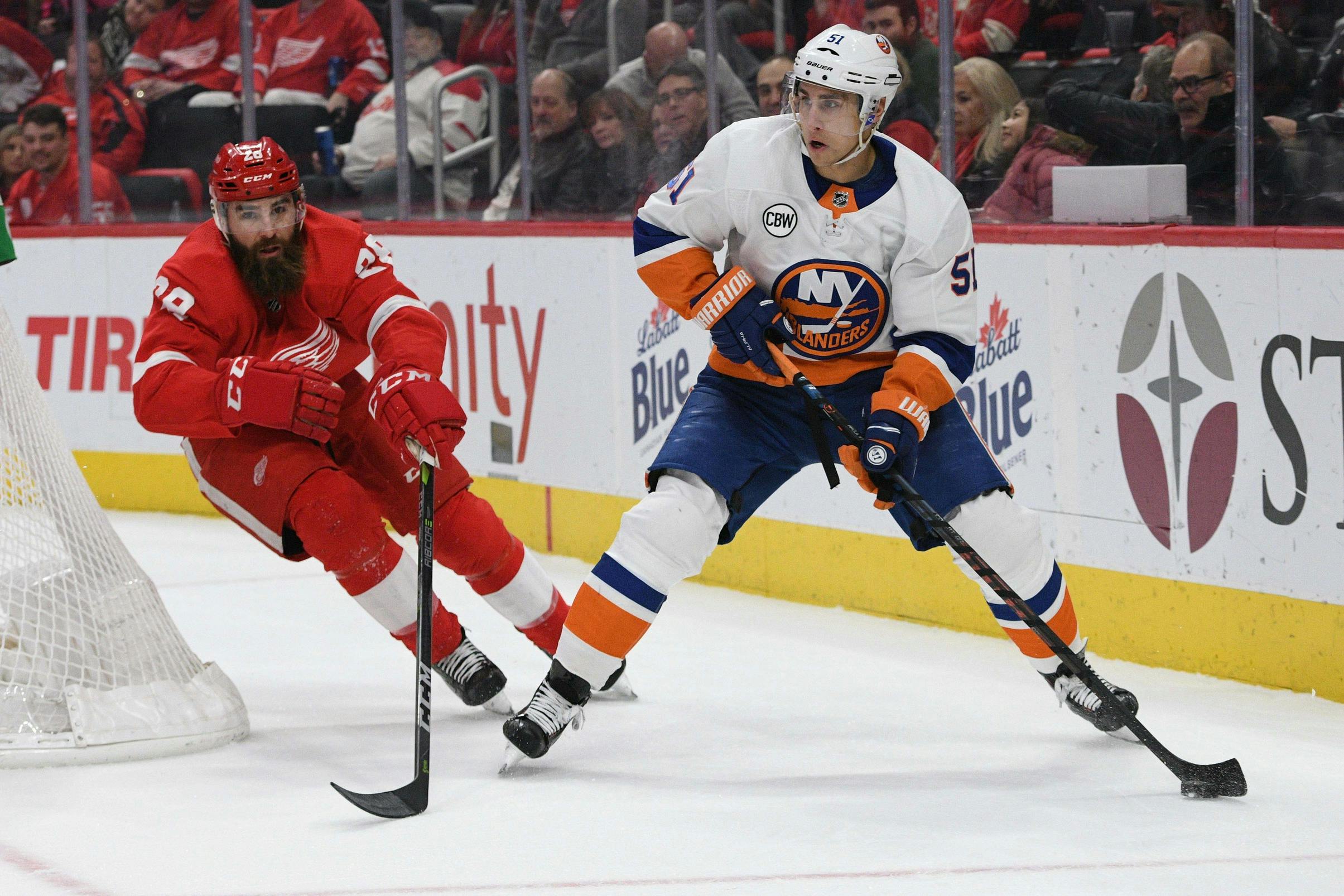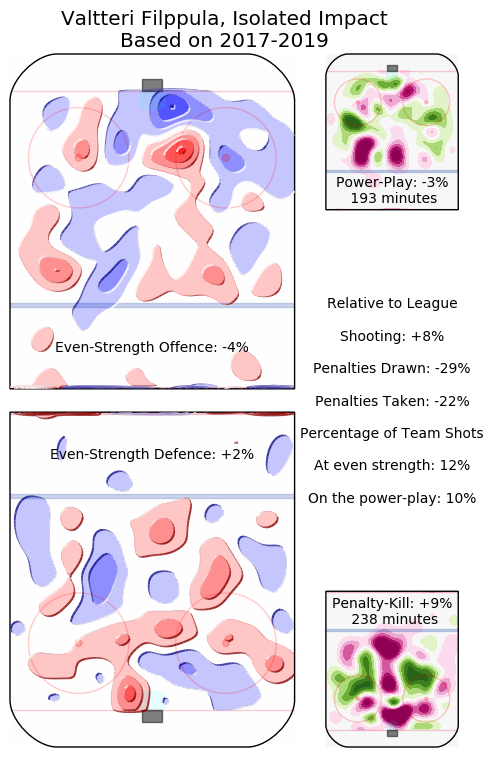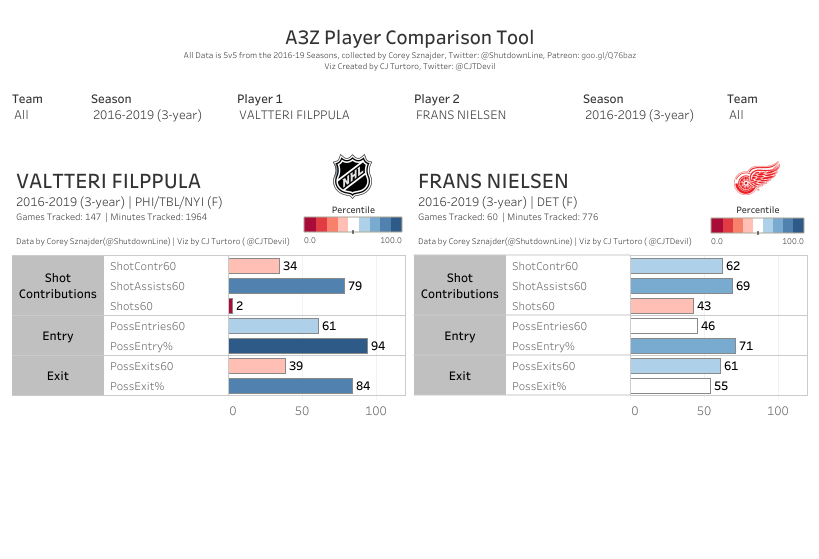What can we expect from Valtteri Filppula?

By Tom Mitsos
4 years agoThe Detroit Red Wings brought back a familiar face July 1, signing Valtteri Filppula to a two-year, $6 million deal.

It’s been six seasons since the Finn last played for the Red Wings; during his final season with Detroit, the lockout-shortened 2012-13 season, he scored nine goals and added eight assists in 41 games. Pretty underwhelming to say the least, but he did follow that up with a 58-point campaign (25 goals, 33 assists) in 75 games during his first season with the Tampa Bay Lightning the following year.
Fast forward to the 2019-20 season, and Filppula is on the wrong side of 30 and is only going to regress until he decides to hang up his skates for good.
Last season with the New York Islanders, he had 17 goals and 14 assists in 72 games and added another four assists in eight playoff games. So while Filppula hasn’t completely fallen off the deep end, he clearly isn’t the player Red Wings fans remember.
But what can fans expect from the centerman, let’s take a look.

Valtteri Filppula isolated impact. Courtesy Micah Blake McCurdy
The graph above from Micah Blake McCurdy is Filppula’s isolated impact for the past three seasons. Simply, it attempts to quantify a player’s personal impact on the ice minus his teammates.
In the larger chart, the blue areas represent areas where Filppula shoots less than league average, and red areas signify areas where Filppula shoots more than league average; as you can see, it’s not ideal.
The entire area around the net is shaded in blue, and the darker blue spot to the right of the net is even more worrisome. However, the darker red area at the hash marks of the faceoff circle is a welcomed sign and at least some evidence that Filppula can generate offense at 35.
Filppula had a Corsi for percentage of 44.07 last season, according to Natural Stat Trick, a career low. However, he was near the top of the Islanders in defensive zone faceoffs, which certainly attributed to the low Corsi for mark.
On the defensive side, there is some red to the immediate left of the net, as well as some by the hash marks of the faceoff circles. Again, not ideal but a massive improvement over Thomas Vanek, who wasn’t reliable at all defensively.
On the power play, strangely enough, he took more shots from the blue line — the purple circles — than from the top of the faceoff circles. Looking back at a couple of games from this past season, Filppula doesn’t quarterback power plays, so I have to imagine it’s more a coincidence than anything. The Red Wings should probably utilize him in a bumper role, so he can set up teammates on the half-board or dish it back to the point for a shot or more passing options.
On the penalty kill, the shade of purple down the middle is very disconcerting. Teams have generated 9% more offense when Filppula is manning the PK, and I think it’s clear the Red Wings should stick with Frans Nielsen on the PK.
As for the rest of the stats, Filppula’s shooting ability is above average and he doesn’t draw as many penalties, but he doesn’t take as many penalties as the average player. There are some positives, but at this point in his career, Filppula will not move the needle very much.
Now that we’ve looked at his offensive and defensive contributions, let’s take a look at zone entries and exits.

Player comparison tool. Courtesy CJ Turtoro
CJ Turtoro‘s chart, which uses Corey Sznajder‘s data, shows Filppula is in the 94th percentile when it comes to possession entries — when a player carries or passes the puck into the offensive zone rather than dumping it in. It’s an important skill to have as a center, as entering the zone with possession leads to more shots on net than if a puck is dumped in. For comparison’s sake, Andreas Athanasiou is in the 95th percentile, which shows just how good Filppula is at gaining the zone with possession.
However, his entry possessions/60 is only in the 61st percentile, so he doesn’t carry the puck in as often as Athanasiou (97) but more than Nielsen. Filppula isn’t a speed demon by any means, so he’ll likely use his passing to enter the zone rather than his skating. Filppula’s zone exits with possession also are better than Nielsen’s, something the Red Wings as a whole struggled with last season.
I mentioned earlier that Filppula’s shot is better than the average NHL player’s, but as Sznajder’s data shows us, he doesn’t shoot very often (just 104 shot attempts at 5 on 5 last season). He is more of a pass-first player, as evidenced by the high shot assists per 60. As a reminder, shot assists are passes that directly lead to shots.
As I stated earlier, Filppula isn’t moving the needle much, and that’s fine. General manager Steve Yzerman simply wanted a stopgap to give Joe Veleno and other prospects time to develop before they get full-time NHL minutes.
He’s an upgrade over Vanek defensively, and might even produce slightly more offensively. However, he isn’t a difference-maker, and if he can chip in 30 to 40 points, Red Wings fans should be satisfied.
Recent articles from Tom Mitsos





